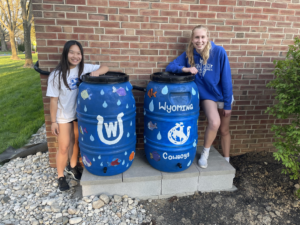2021, Cincinnati, OH, USA
Located in Southwestern Ohio, the Mill Creek Watershed has suffered greatly due to pollution over the past 100 years. Named “the most endangered urban river in North America” and “one of the most severely polluted and physically degraded urban streams in the United States,” primarily caused by non-point source (NPS) pollution (including lawn chemicals and pesticides), the Mill Creek needs help.
Mark Keller and Owen Vickers, students at Wyoming High School put together a proposal to help save the Mill Creek Watershed. In their proposal, they made an argument that creating habitats where bats can thrive may be the answer to enhancing the health of the watershed. With a flourishing bat population that can eat thousands of insects a night, they suggest that pesticide use and pollution caused by runoff into the watershed can be greatly reduced.
Their proposal, Go 2 Bat for Our Watershed, included developing an educational program that will help improve the reputation of bats as an important and useful member of our ecosystem, education of people about the benefits bats provide, and providing resources for people to encourage bat habitats in their yards and gardens. The campaign included creating a website (go2bat.org), development of promotional materials, including posters and flyers which were distributed at the Wyoming schools, social media (Twitter and Facebook) and school blog posts. They also raffled off 10 bat houses among those who registered on their website with their email addresses, to further promote the use of bat houses and increase traffic to their website. The website received 182 unique visitors within the first 20 days of the campaign, with 26 users signing up for the bat house promotion. Although their campaign primarily targeted the community of Wyoming, Ohio, they made recommendations for additional promotional opportunities to raise awareness among a larger audience and other communities, making an even bigger impact to help save the Mill Creek Watershed.
promote the use of bat houses and increase traffic to their website. The website received 182 unique visitors within the first 20 days of the campaign, with 26 users signing up for the bat house promotion. Although their campaign primarily targeted the community of Wyoming, Ohio, they made recommendations for additional promotional opportunities to raise awareness among a larger audience and other communities, making an even bigger impact to help save the Mill Creek Watershed.










